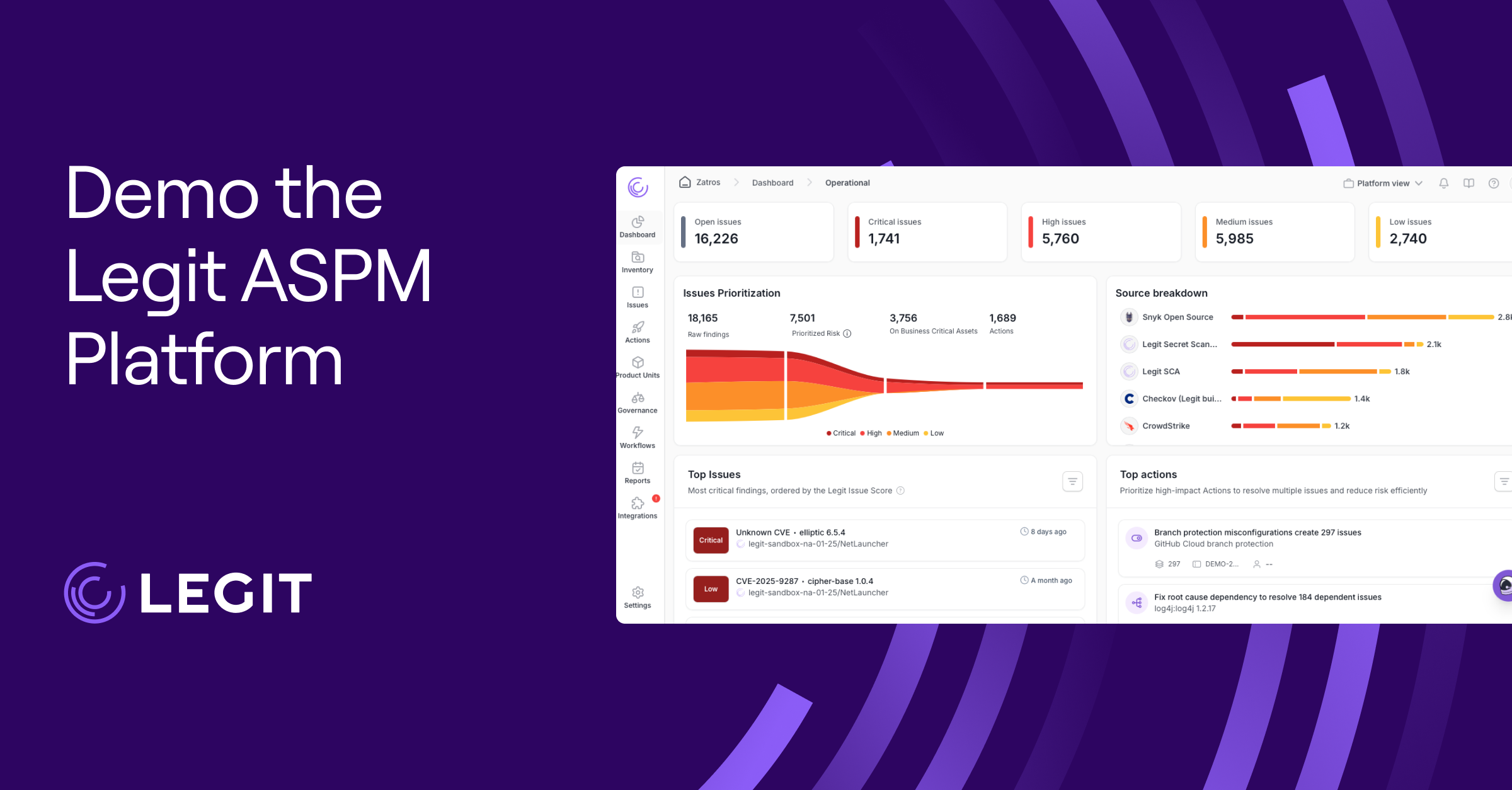Choosing a software bill of materials (SBOM) standard to follow might feel like an inconvenient extra step. Each standard offers a different structure, level of detail, and focus. Some prioritize automation, while others focus on compliance or compatibility with specific ecosystems.
If you're trying to stay secure and audit-ready, choosing the right format is key to clear documentation. Here’s a guide to the most widely used SBOM standards, their features, and choosing the right fit for your team.
What Are SBOM Standards?
SBOM standards give you a consistent way to structure and share software composition data. Instead of everyone inventing their own way of describing what’s inside a software package, these standards offer a consistent SBOM format. That consistency makes it easier for teams, tools, and even regulators to understand what’s in a codebase and how secure it is.
These efforts have been partly shaped by frameworks from organizations like the National Telecommunications and Information Administration (NTIA), which outlines minimum elements and encourages interoperability across tools and platforms. These standards provide a structured way to present information about software components, including package names, versions, licenses, and known vulnerabilities—all documented in an SBOM file.
Beyond making SBOMs readable by different systems, standards also lay the groundwork for interoperability. They make it easier to reuse SBOMs created during development later in the software lifecycle, whether running compliance audits, scanning for vulnerabilities, or updating legacy applications. Plus, many tools that generate and manage SBOMs directly support these standards.
Why Are SBOMs Important?
SBOMs offer something every security and engineering team needs: a clear record of what’s in your software. As codebases grow more complex and rely heavily on open-source and third-party components, that visibility helps you stay ahead of vulnerabilities, track license obligations, and avoid duplicate or unnecessary dependencies. With an accurate SBOM, you're not left guessing when a new CVE drops—you know exactly which packages are in play.
SBOMs also reduce friction across the entire software lifecycle. Development teams can avoid bloated or outdated code, while security teams get a head start on risk assessments without digging through layers of build artifacts. When auditors come knocking, having a centralized, well-structured SBOM file supports continuous compliance efforts and simplifies documentation across releases.
Regulations are catching up. Executive Order 14028 introduced SBOM requirements for software sold to U.S. federal agencies, though these requirements apply conditionally under guidance like OMB M-22-18. Meanwhile, the EU’s Cyber Resilience Act will mandate them across all digital products by 2027.
As more organizations adopt SBOMs, they’re also investing in consistent processes for managing them across teams—something SBOM management best practices can help shape at scale. When a significant vulnerability like Log4j hits, you can use an SBOM like a map to quickly pinpoint affected systems instead of scrambling through code and containers.
SBOM Standards and Formats
A few well-supported standards form the foundation of the SBOM ecosystem, bringing structure and consistency to software component documentation. They each take a different approach based on their original use cases, but all aim to improve software transparency, support security efforts, and make SBOMs easier to automate and analyze.
SPDX
Software Package Data Exchange (SPDX) is the most mature and formally recognized SBOM standard. The Linux Foundation maintains SPDX and has published it as an international standard (ISO/IEC 5962:2021).
Focused initially on license tracking, SPDX has evolved into a highly detailed format capable of capturing software metadata, from package names and versions to copyrights, security identifiers, and file-level licensing. The format also supports identifiers like common platform enumeration (CPE) and package URL (PURL), making mapping components to known vulnerabilities or licensing obligations easier.
SPDX is widely adopted by large software vendors and open-source communities, including Microsoft and Intel, and is especially useful when compliance, traceability, and auditability are top priorities. It also supports multiple output formats (including JSON, tag-value, RDF/XML, and spreadsheets), making it flexible for organizations working across different ecosystems.
The 2024 version (SPDX 3.0) expands its scope with support for AI models, datasets, and better relationship modeling, which helps teams keep pace with modern software supply chain security demands.
CycloneDX
CycloneDX is a lightweight SBOM standard built with automation and security in mind. Developed by the OWASP community, it focuses on fast adoption and tight integration into modern DevSecOps pipelines. CycloneDX supports various formats (JSON, XML, Protobuf) and easily captures software, hardware, and software-as-a-service (SaaS) dependencies and associated metadata like license identifiers and hashes.
What sets CycloneDX apart is its strong alignment with cybersecurity use cases. It offers native support for vulnerability tracking, including Vulnerability Exploitability eXchange (VEX), supply chain pedigree, and component attestation. It’s also highly extensible, with optional support for additional bill of materials (BOM) types like the software-as-a-service bill of materials (SaaSBOM) and machine learning bill of materials (ML BOM).
This makes CycloneDX a go-to choice for teams focused on software supply chain vulnerability protection and managing risk directly within their SDLC. Its focus on automation, flexibility, and real-time insights makes it an excellent choice for building a modern software security strategy.
SWID Tags
Software identification (SWID) tags are an older format initially designed for software inventory management. Defined under ISO/IEC 19770-2, SWID tags describe installed software using metadata like product name, version, patch level, and vendor. While they help track what’s running on endpoints, they don’t capture complex dependency trees or support software supply chain analysis.
Because of that, SWID tags are rarely used in modern SBOM workflows focused on security and dependency management. But they still serve a purpose in regulated environments requiring accurate software inventory tracking. While some legacy systems still rely on them, their limited scope and lack of tooling support make them a less practical choice than SPDX or CycloneDX for most organizations.
What Should an SBOM Include?
At a minimum, every SBOM should include three core elements. These aren’t nice-to-haves—they’re foundational to making the SBOM practical, readable, and actionable across your software supply chain.
- Basic data fields for every component: This includes the component name, version, supplier, and unique identifiers like PURLs or CPEs. These fields allow systems to map packages to known vulnerabilities and understand what’s in use.
- Defined practices and processes: A reliable SBOM should follow standard generation, distribution, updates, and error-handling processes to stay accurate and trustworthy.
- Support for automation: Manual SBOMs break down fast. The SBOM must be machine-readable and automatically generated at key points in your SDLC to stay useful. That’s how you keep pace with rapid releases while maintaining visibility across every build.
Maintain an Accurate SBOM With Legit Security
Legit Security helps organizations stay ahead of regulatory requirements by supporting the creation and validation of SBOMs that align with trusted standards.
Whether building from scratch or integrating with existing pipelines, Legit ensures your SBOMs are accurate, compliant, and continuously updated. That visibility makes it easier to manage risk across your software supply chain and prove compliance when it matters most—without slowing down your development process. Request a demo today.
Download our new whitepaper.


